The 9 Best Fitness Trackers, Tested and Reviewed
Dotdash Meredith and Yahoo Inc. may earn commission or revenue on some items through the links below.
The Garmin Vivomove Sport earned the top spot in our testing
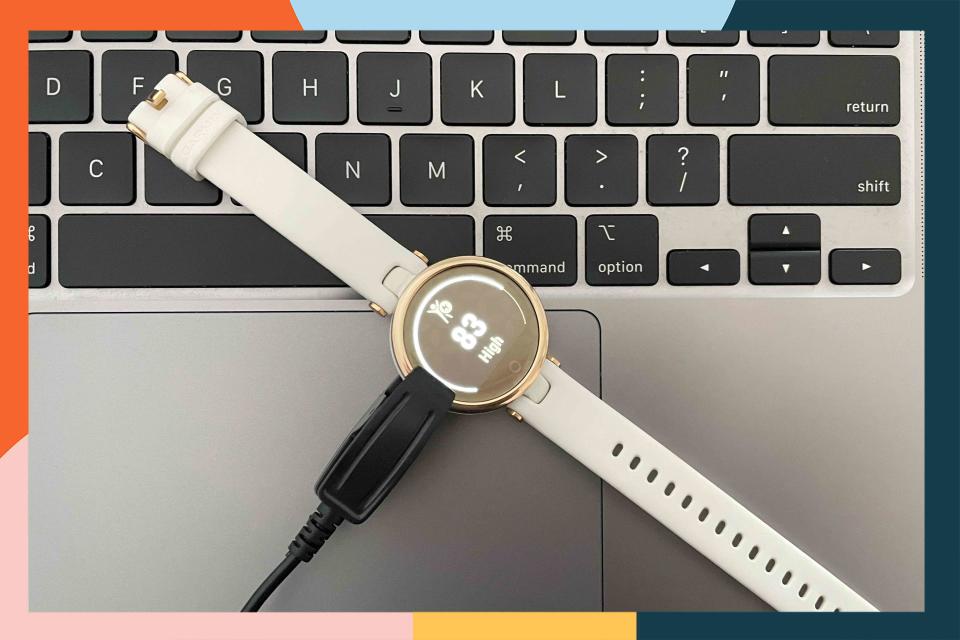
People / Lily Moe
Once reserved for elite athletes, fitness trackers are now something anyone and everyone can benefit from, offering a wealth of wellness knowledge and data. In fact, the name may be somewhat of a misnomer. Sure, they’re great for keeping tabs on your workouts, but these days fitness trackers can do so much more, offering insight on sleep patterns, stress levels, calories burned… the list goes on and on.
“Fitness trackers help you to quantify your output and take the guesswork out of what you’ve done,” says Kealan Bailey, a founding trainer and VP of training and development for Rumble Boxing. And that’s a great way to both keep you accountable, as well as increase your sense of accomplishment, she adds. Not to mention, a fitness tracker can be a great boost to your wellness routine, particularly if you’re feeling like you’re in a bit of a rut or slump. “There’s nothing like a fun new device to get you excited and motivated to make healthy lifestyle choices,” points out fitness expert Lauren Jenai, co-founder of CrossFit and founder of Manifest.
Given that there are so many fitness trackers out there — ranging from inexpensive, basic step counters to pricey picks with every possible feature you can imagine — we set out to find the best option for every scenario. Our testers each wore one for a month, tracking at least four weekly workouts, as well as taking note of the other data it measured, how accurate it was, the ease of setup and use, and how comfortable it was to wear. Of the 13 we tested, nine stood out above the rest.
Here, the best fitness trackers that PEOPLE tested.
Best Overall: Garmin Vivomove Sport
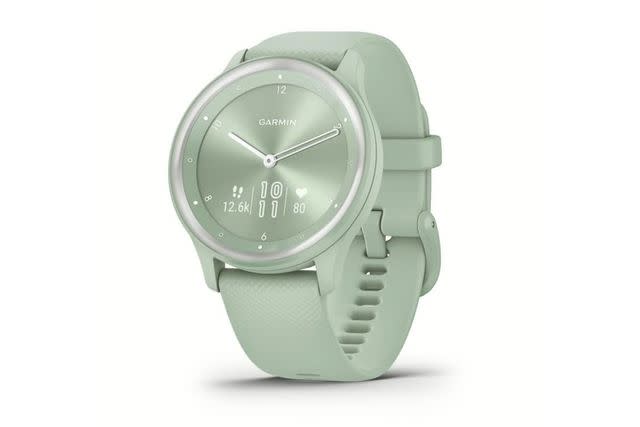
Pros
The design is sleek and aesthetically-pleasing, similar to that of a traditional wristwatch
It’s easy to sync and pair with your smartphone, and the free app provides the information measured in an easy-to-understand way
It tracks a variety of metrics, including heart rate, stress levels, steps, calories, menstrual cycle, and more
Cons
While it's compatible with both Apple and Android, you can only respond to texts from the device if you have an Android phone
No matter what your motivation is for using a fitness tracker, this is a foolproof pick. It can be used for a host of reasons, from monitoring your sleep patterns (a favorite feature in our testing) to step-counting to tracking your heart rate. It’s also a good choice if you want a fitness tracker that looks like a regular watch. From the onset, it features a standard, analog clock, but once you tap or swipe the face, it reveals the hidden touchscreen — so sleek! It’s also lightweight and comfortable to wear day-in and day-out.
More on the sleep data: Our tester was amazed at how poorly they were actually sleeping and found that the app encouraged them to want to make positive changes. You get a lot of info in the app, such as how long you slept, how long you were awake, and if you went into REM sleep or light sleeping. It also tells you your average heart rate and oxygen level throughout the night.
We found it to be incredibly easy to pair this tracker to our smartphones with the free Garmin Connect app, which works similar to a fitness community where you can compete with other users (friendly competition, of course) and share your results with friends and family. There are also tons of preloaded sports apps to get a bit more specific with your type of workout, like swimming or yoga. However, if you want to track distance sports, there is no GPS within the watch — you have to sync to your phone's GPS.
Another factor we didn't love is that you can only respond to texts from the watch if you have an Android device, which might be frustrating if you're looking for that easy correspondence. All in all, though, this watch has an amazing user experience for both the watch itself and the Garmin app, logs very accurate data, and feels comfortable to wear, so we consider the under-$200 price tag a big value.
Price at time of publish: $180
Touchscreen: Yes | Heart Rate Tracker: Yes | GPS: Yes | Battery Life: Up to 5 days | Colors: 4
Related:An Honest Review of the Garmin Forerunner 255 Fitness Watch
Best Everyday: Fitbit Inspire 3
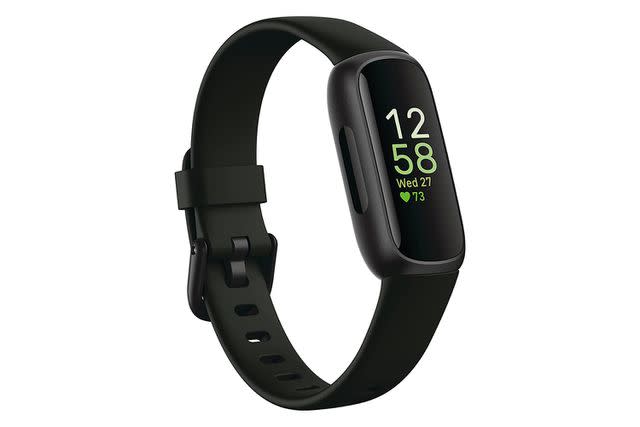
Pros
At under $100, this was one of the more affordable options we tested
The battery lifespan is impressive, lasting up to 10 days
It’s extremely lightweight and comfortable, and doesn’t pinch, tug, or irritate skin
Cons
The step-counter can occasionally be too sensitive, picking up on another movement and counting it as steps
If you’re on the hunt for a fitness tracker that you can put on and never take off, this is it. First and foremost, it’s incredibly lightweight, with a slim profile and silicone band that’s so comfortable, you may forget you’re wearing it. It also proved to be very accurate and effective at tracking a wide array of metrics; the activity-related ones were especially impressive, including an exercise streak number, steps, heart rate zones, a cardio fitness score, and more. One of our testers found that their fitness goals were now more specific and attainable because of the helpful data that helps them see their current stats, as well as projections for where they can be tomorrow or the next week.
Another useful function is the alarm which gently vibrates to wake you up — a much more welcome way to start the day than a loud phone jingle. You can also set it to wake you up when you're in the lightest stage of sleep, anytime during the 30-minute window of your set wakeup time.
The setup process was a breeze — downloading the app, making a profile, and connecting your Fitbit via Bluetooth takes just 10 minutes. It's very easy to customize both the tracker and the app — you can adjust the tracker's clock face, included apps, and settings right from your phone. You'll also get free access to Fitbit Premium for a year as an added bonus.
Finally, we'd be remiss not to mention the battery life: Once fully charged, the watch can be used for 10 days before dying, which is longer than most others we tested.
We think the $100 price tag is more than justified for all of the value you get with this watch.
Price at time of publish: $99.95
Touchscreen: Yes | Heart Rate Tracker: Yes | GPS: Yes | Battery Life: Up to 10 days | Colors: 3
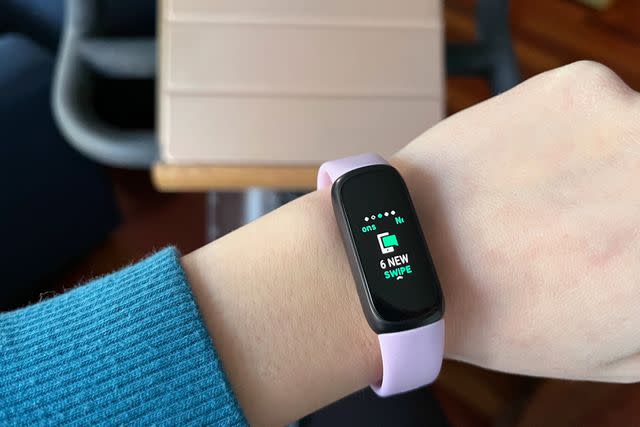
People / Sarah Felbin
Best Sleep Tracker: Oura Ring Gen3
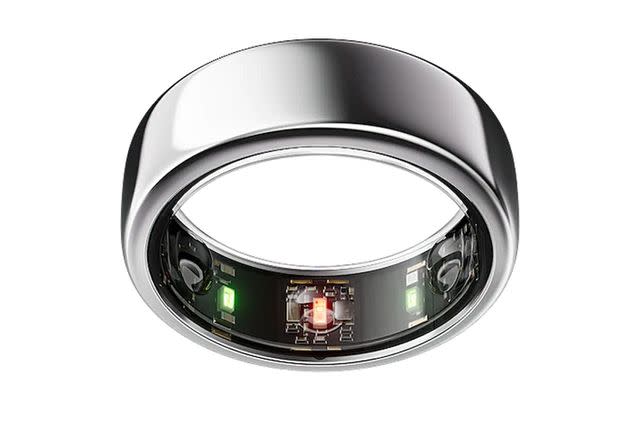
Pros
Accurately guesses which type of workout you did based on the movement and your heart rate
Sleep-tracking accuracy is spot-on and helps recommend daily activities based on the previous night's sleep score
Looks like a chic piece of jewelry that can easily be paired with your everyday accessories
Cons
This proved to be fairly inaccurate when tracking physical activity, such as steps taken and calories burned
It requires an accompanying monthly membership, which costs $6 per month
You may have heard of this buzzed-about tracker, a favorite among celebs such as Gwyneth Paltrow and Kim Kardashian who have used it to compare their sleep habits. To that point, our tests showed that this was shockingly accurate when it came to its sleep tracking abilities. It offers a personalized sleep score every AM, bedtime guidance, automatic nap detection, and more. There’s also a “readiness” score in the morning that gives you an expectation for the day’s performance, something that was a fan favorite feature in our testing. The ring tracks your body temperature too, which we liked using for cycle-syncing purposes.
While it was comfortable to wear (even while sleeping and when getting it wet), if you have narrow, slim fingers, you may find it to be a bit bulky. And as impressive as its sleep tracking prowess was, it did fall short when it came to accurately keeping tabs on activity; our testing showed that even manually inputted workouts weren’t recorded correctly. We also didn't love that you have to pay for your monthly membership, unlike the free Garmin Connect app from our Best Overall winner.
Price at time of publish: $349
Touchscreen: No | Heart Rate Tracker: Yes | GPS: No | Battery Life: Up to 7 days | Colors: 5
Best for Cross-Training: Fitbit Charge 5
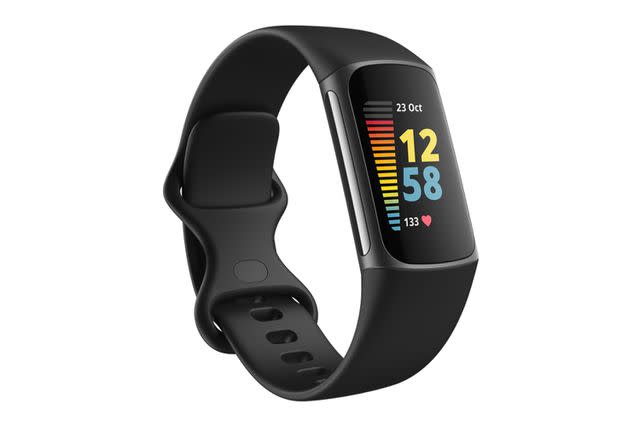
Pros
The slim profile and comfortable band doesn’t get in the way while strength training
It’s very easy to track workouts, and will even do so automatically
It tracks metrics both in real-time and provides monthly reports
Cons
In our testing, it occasionally lagged or froze, and needed to be updated or powered off
Another option from Fitbit, this one is ideal for cross-training purposes. We found it to be extremely accurate when it came to recording cardio workouts; however, during CrossFit workouts, it would log 3,000 calories burned, which our tester felt was too good to be true when previously, other devices would tell them they burned an average of 600-900 calories. As far as strength-training goes, our tester — an avid CrossFit fan — loved that it didn’t get in the way of moves such as cleans, pull-ups, snatches, and handstands, the way that other bulkier trackers can, saying the comfort was stellar. You can also shower and swim with it on and barely notice it's there. Tracking can even sometimes be automatic — one day, our tester was on a treadmill and began running without setting up a running workout on the watch and it was detected and documented anyway.
The Fitbit Charge 5 also boasts a variety of features when it comes to measuring heart rate, including irregular heart rhythm notifications and low/high heart rate notifications, especially useful for those with heart conditions.
This fitness tracker did lose a few points for some technological glitches such as freezing, including the need to update and/or restart it for seemingly no reason several times over the course of our month-long testing period. Also, we couldn't find a way to force restart the device other than to push an update with our phone after it reached 50% battery.
Price at time of publish: $149.95
Touchscreen: Yes | Heart Rate Tracker: Yes | GPS: Yes | Battery Life: Up to 7 days | Colors: 3
Best GPS: Polar Vantage V2 Smartwatch
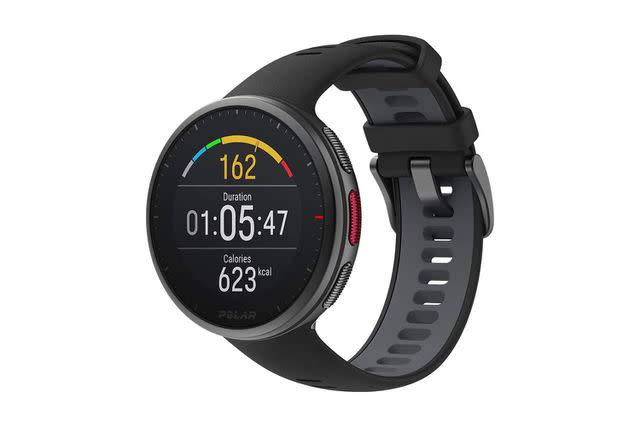
Pros
It offers a variety of different GPS tracking features, making it ideal for outdoor runs
The accuracy is spot-on, particularly since you have to manually start and stop the tracking
Cons
The watch itself is fairly bulky and the watch face isn’t customizable
It is strictly a fitness tracker and can only pair with your phone for music and text/call notifications, but you can't do much more there
While the Polar Vantage V2 Smartwatch does help monitor sleep, where it really excels is in tracking activity, particularly for outdoor runs or walks. A big component of its accuracy is the fact that you need to start and stop the tracking yourself, which our tester appreciated as opposed to having it guess your workout duration. With this watch, you'll get the basic GPS features — altimeter, coordinates, compass — but also things such as an automatic hill detector, route guidance, a track-back function that will get you back to where you started, and more. (The turn-by-turn guidance, where the watch buzzes before upcoming turns, was also a favorite in testing.)
Once you’re done with your workout, the device also offers an array of recovery tests that make it easy to see how your body is adapting.
Something we did not like about this watch is that it's quite clunky, and the font on incoming notifications is equally unnecessarily large which means that messages would get cut off. It's also solely a fitness tracker — for instance, there is no Apple or Google Pay and you can't store music (you can only connect it to a music streaming service on your phone temporarily). Given the higher price point than other trackers we tested, we don't feel that the value is impressive, but if GPS functionality is important to you, then this is certainly the best watch for that.
Price at time of publish: $499.95
Touchscreen: Yes | Heart Rate Tracker: Yes | GPS: Yes | Battery Life: Up to 100 hours | Colors: 2
Related:The 19 Best Running Shoes to Get You to the Finish Line — Whatever Yours Might Be
Best Investment: Apple Watch Ultra
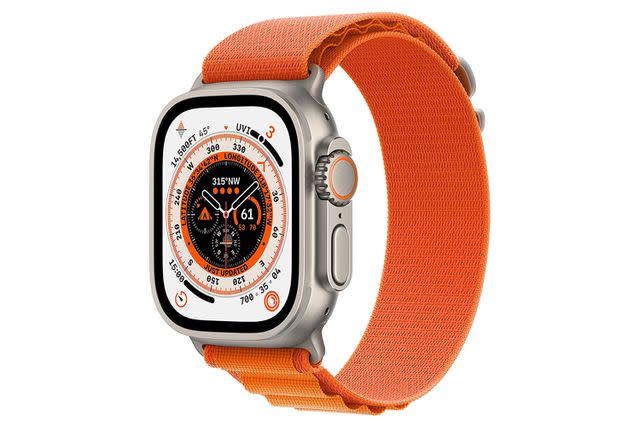
Pros
This watch has a large and bright display that’s very easy to read
It has a built-in cellular function, and can do almost everything an iPhone can, including utilize Apple Pay, Siri, the App Store, and more
Cons
It’s tricky and time-consuming to set up, requiring multiple updates that need to be downloaded before you can use it
The watch is a bit heavy, which can make it uncomfortable to wear
The priciest pick of the bunch, this tracker rings in at a whopping $800. Why the steep price? It essentially is like having a mini iPhone on your wrist, with cellular function built-in so that you can call or text, two speakers, three microphones, and an extremely clear and bright screen. Keep in mind that it is very large and heavy — so much so that our tester found it uncomfortable to wear overnight, mitigating its ability to be used as a sleep tracker. Still, it’s spot-on when it comes to measuring metrics, and also boasts a unique "action" button that lets you quickly and easily start and stop a freestyle workout, a feature that we found both cool and very handy.
Compared with past versions of the Apple Watch (the Series 8 and the SE), this watch offers a variety of additional features, like 100 meters of water resistance and the capability to be paired with the Oceanic+ app to use as a dive computer, an 86-decibel safety siren audible up to 600 feet, precision dual-frequency GPS, and a 36-hour battery life (past versions were only 18 hours), among others.
While it may be a bit much for everyday basic wear, for those who want lots of added features or for more intense outdoor activities, it’s worth the spend.
Price at time of publish: $799
Touchscreen: Yes | Heart Rate Tracker: Yes | GPS: Yes | Battery Life: Up to 36-60 hours, depending on battery mode | Colors: 9
Best Design: Garmin Lily
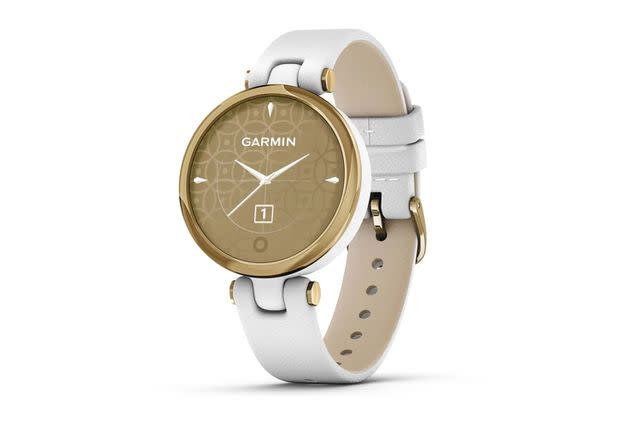
Pros
This boasts plenty of unique features, including pre-loaded sports apps, a hydration tracker, and breath work exercises
The design is very aesthetically-pleasing, making this look more like a regular watch than a fitness tracker
The band dries quickly after being exposed to sweat or water
Cons
It lacks certain functionalities like built-in GPS and outgoing texting (for iOS users)
There’s a wide range of designs when it comes to fitness trackers, and this one is a good example of an option that’s so aesthetically-pleasing you’ll never have to take it off. (Our tester, a devoted step-counter, loved that she could wear it at all times, even to the office or social events.) It looks exactly like a traditional watch, complete with a leather band. But make no mistake about it, it still delivers on all its fitness-tracking functions with remarkable accuracy.
We loved that this watch comes with preloaded sports apps, like cycling, yoga, etc. which can be used in place of pricey in-person classes. We also appreciated that the watch streamlined the need for additional apps like a hydration tracking app, breath work, and a menstrual tracking app; however, it does lack some functionality. It does not have built-in GPS as it relies on your phone's GPS to track distance and route information, and you can also only reply to text messages if you have an Android phone.
Price at time of publish: $249.99
Touchscreen: Yes | Heart Rate Tracker: Yes | GPS: Yes | Battery Life: Up to 5 days | Colors: 6 | Compatibility: Apple, Android
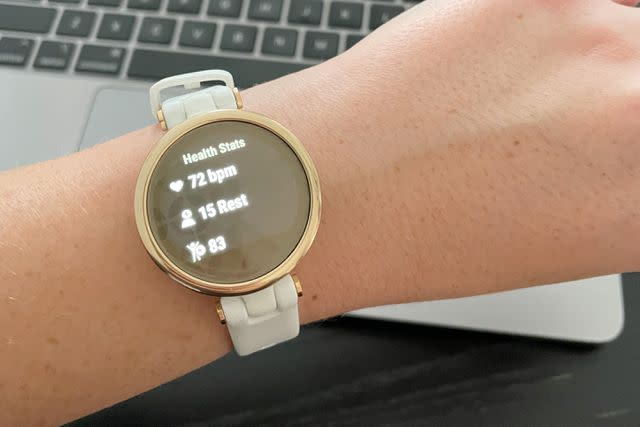
People / Lily Moe
Best for Runners: Coros Pace 2
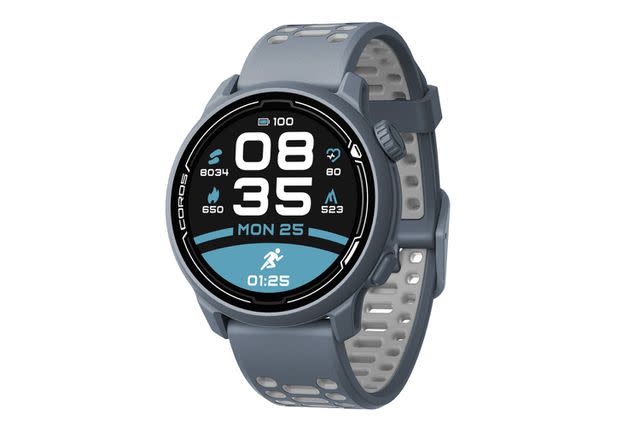
Pros
This boasts some of the more impressive battery life out there, lasting up to 20 days with regular use
It’s incredibly lightweight, particularly given that it has full GPS capabilities
Cons
While initial set-up is easy, the sheer amount of settings can be a bit overwhelming and requires a little bit of experimentation to determine which work best for you
There’s really no element of your run that this device can’t track. It does much more than track steps, pace, and miles — it gives elevation gain and loss, heart rate, time spent in recovery, fatigue, and running performance after one week of data. The metrics were accurate, and it earned a perfect score when it came to comfort, which is no small feat given that it does have full GPS capabilities. We also appreciated some fun weather updates like storm warnings and daily sunset and sunrise times.
One minor drawback? The screen has to be unlocked in order to change anything, although there is a way to turn that function off during exercise so that you don’t have to mess with it mid-run. And while the initial setup was a piece of cake, the sheer volume of setting options were a bit daunting and needed some trial and error in order to figure out how to accurately change them. There was also a lot of data that was requested to be input based on the type of workout you were doing (for example; for strength-training, it asked how many reps and how long your rest time was), but it did spit back a lot of helpful information, particularly for running, such as your distance, pace, and moving time, as well as smooth path-tracing lines (as opposed to the rigid squiggles you'll get from other apps).
Price at time of publish: $199
Touchscreen: Yes | Heart Rate Tracker: Yes | GPS: Yes | Battery Life: Up to 20 days | Colors: 7
Best Budget: Amazfit Band 7
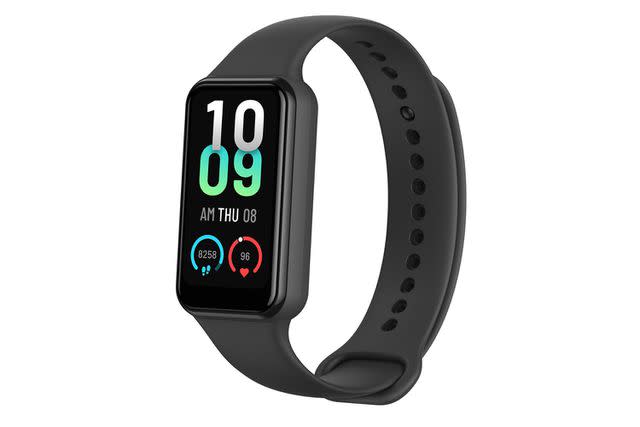
Pros
A personalized alarm setting will ensure you wake up at the ideal time based on your sleep patterns
The battery life is long and it charges quickly, going from 10% to 100% within an hour, in our testing
Cons
The interface of the accompanying app isn’t particularly user-friendly
There’s no sleep mode on the tracker, so it can sometimes emit unwanted light while you sleep
Here’s proof positive that you don’t have to shell out the big bucks for an effective option. Great for those who are on a budget, or fitness tracker first-timers who may be a bit hesitant about trying one, this affordable winner was comfortable (no buttons ensure it’s super streamlined) and effectively tracked fitness and other metrics. You'll need to manually choose the activity you're doing in order to track, but there are several options to choose from like running on a treadmill, cycling, swimming, and jumping rope, which we found gave more accurate data into our performance as opposed to just getting general heart rate and calorie-burning analytics. We also liked that there is a setting that allows the fitness tracker to automatically detect when there’s an increase in activity — or detect when you’re going to sleep — so that the band can focus more on heart rate monitoring (or sleep-tracking) data.
The sleep-tracking features were an especially big hit in our testing: Our tester noticed substantial improvements in their quality of sleep, as well as how their daily practices before bed affected their overall sleep. In time, they were able to make noticeable mind-body connections with this tracker. One downside, though, is that the watch does not have "sleep" mode for the display, so if you accidentally tapped it in the middle of the night, you could wake up to the brightness.
Keep in mind that the user interface on the watch and the accompanying app aren’t necessarily the most intuitive and do require a bit of digging and searching in order to fully access all of the available settings and functions. Our tester also noted that they would have liked for there to be a horizontal scroll option to more easily view the features and apps.
Price at time of publish: $50
Touchscreen: Yes | Heart Rate Tracker: Yes | GPS: No | Battery Life: Up to 18 days | Colors: 3
How We Tested
Our testers wore a fitness tracker for one month, using it to track at least four workouts per week. Any other things they tracked (sleep, menstrual cycles) was up to them. After the testing period, they reported back as to how exactly they used the tracker and what kinds of information it gave them that they previously weren’t aware of. They then ranked the device on a scale of one to five when it came to ease of setup, ease of use, comfort, and accuracy, and weighed in on their feelings toward the overall value of the product.
Things to Consider Before Buying a Fitness Tracker
How You’ll Be Using It
Consider your goals for using a fitness tracker and the type of information and data you want to collect. “Some people may just want a simple step counter, whereas others may want to know more about their sleep, recovery, and performance,” points out Bailey. It’s all totally up to you, though she notes that it is worth keeping in mind that what you want may change over time, particularly once you start using one. Our overall winner, the Garmin Vivomove Sport, is a good choice given that it can easily be used to track just one thing… or many.
Comfort
To make the most of your tracker, it needs to be worn for long periods of time and should be comfortable, says Jenai. If the tracker is uncomfortable or the interface is difficult to use, consistent and effective tracking can be difficult, she adds. Make sure that you like both the material of the band (silicone and nylon are most common), and that the tracker itself doesn’t feel too heavy or cumbersome. The Fitbit Inspire 3 Fitness Tracker, our winner as Best Everyday option, proved to be one of the most comfortable ones we tested.
How the Data is Shared
Think about if community and team features are important to you, suggests Paul Freschi, a certified personal trainer and director of performance at Monarch Athletic Club in Los Angeles. If that’s the case, you may want an option that will allow a coach, trainer, or friends to view your data, which might provide additional motivation and accountability, he adds. Conversely, if you prefer to keep your info private, make sure your fitness tracker has privacy settings that will ensure the data collected isn’t inadvertently shared.
Frequently Asked Questions
Are fitness trackers worth it?
For many people, yes, but it does depend on personality type, note Bailey. “Some people may find that they get unnecessarily obsessive about their fitness tracker which can lead to over exercise or unnecessary stress, or trigger other unhealthy behaviors,” she cautions. On the flip side, for many people, tracking their data is the motivation needed to stay consistent long-term.
“It’s all about your individual personality type, how your brain is wired, and what motivates you,” she says.
Can a fitness tracker help you lose weight?
“Using a fitness tracker to lose weight is like using protein supplements to gain muscle — it can help, but you still need to put in the work,” says Freschi. “A fitness tracker alone will not cause weight loss. The long-term behavior changes related to healthy food choices and a consistent exercise routine will, and these behaviors may be positively impacted by the data you receive from your tracker,” he says. They can also be a helpful tool if you’re not meeting your goals, adds Jenai. Tracking gives you all the information needed to make corrections in your health and fitness journey, she says.
Why Trust PEOPLE?
Melanie Rud is a veteran freelance writer and editor who covers topics from beauty, to pets, to wellness. For this story, she combed through extensive testing insights from each of our testers after their fitness tracker trial was over and used them to outline the winners above. She also conducted her own market research on each product and spoke with Paul Freschi, a certified personal trainer and director of performance at Monarch Athletic Club in Los Angeles, Kealan Bailey, a founding trainer and VP of training and development for Rumble Boxing, and Lauren Jenai, co-founder of CrossFit and founder of Manifest for additional insight.
What Is People Tested?
We created the PEOPLE Tested seal of approval to help you find the very best products for your life. We use our unique methodology to test products in three labs across the country and with our network of home testers to determine their effectiveness, durability, ease of use, and so much more. Based on the results, we rate and recommend products so you can find the right one for your needs.
But we don’t stop there: We also regularly re-review the categories in which we’ve awarded the PEOPLE Tested seal of approval — because the best product of today might not be the best of tomorrow. And by the way, companies can never buy our recommendation: Their products must earn it, fair and square.
In short, PEOPLE Tested provides recommendations you can trust — every day, every purchase.
For more People news, make sure to sign up for our newsletter!
Read the original article on People.

